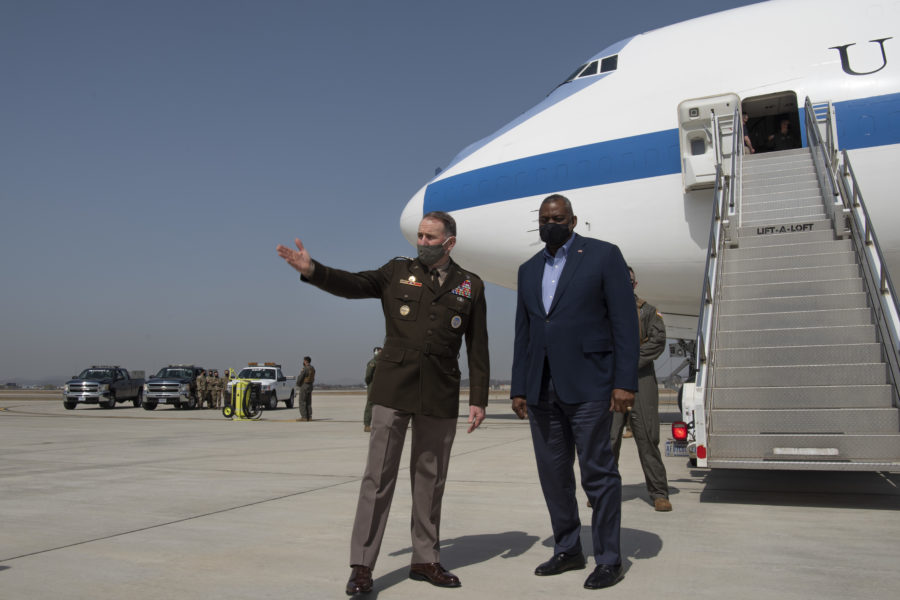The U.S. and South Korean militaries are on schedule for the transfer of wartime operational control authority in 2022 and are taking steps to improve readiness, though the two leaders would not say if large-scale military exercises would return to the peninsula.
South Korean Defense Minister Suh Wook said the alliance has created the “necessary conditions” for the transfer of operational control of combined forces. Defense Secretary Lloyd J. Austin III, speaking alongside Suh during a joint press conference March 18 in Seoul, added that the combined force is “ready to fight tonight and we continue to make progress toward the eventual transition of wartime operational control to a ROK-commanded future combined forces command.”
The U.S. and South Korean militaries have not held large-scale joint training operations since former President Donald J. Trump’s meeting with North Korean leader Kim Jong Un in 2018, instead focusing on “command post” training exercises and smaller local operations. This extended hiatus means large-scale flying exercises like the former Vigilant Ace have not taken place in about four years, and U.S. and South Korean aircraft must leave the peninsula and go to events like Red Flag for high-level training.
Suh said that despite the ongoing pandemic, the two militaries conducted one of the command post exercises earlier this year.
Austin emphasized that readiness remains a “top priority,” but despite the change of administrations, he would not yet commit to a resumption of exercises.
“We’re always looking for ways to make training better, and I think not only here but around the globe, we’ve learned to be flexible, we’ve learned to be adaptive, and we have always, always been effective,” he said. “In terms of … what the training regimen will be going forward, that will be a joint decision between us and the ROK, and we’ll continue to work with the leadership here in the ROK to address those issues.”
Austin and Secretary of State Antony J. Blinken met with their South Korean counterparts on this and other issues, and he said the U.S. is “focused on ensuring that we have the required capability to defend the alliance and defend the ROK if and when called upon to do that.”
“So we have tremendous capability at hand,” he said. “We’re going to increase that capability by ensuring that we can continue to operate as a combined team.”
